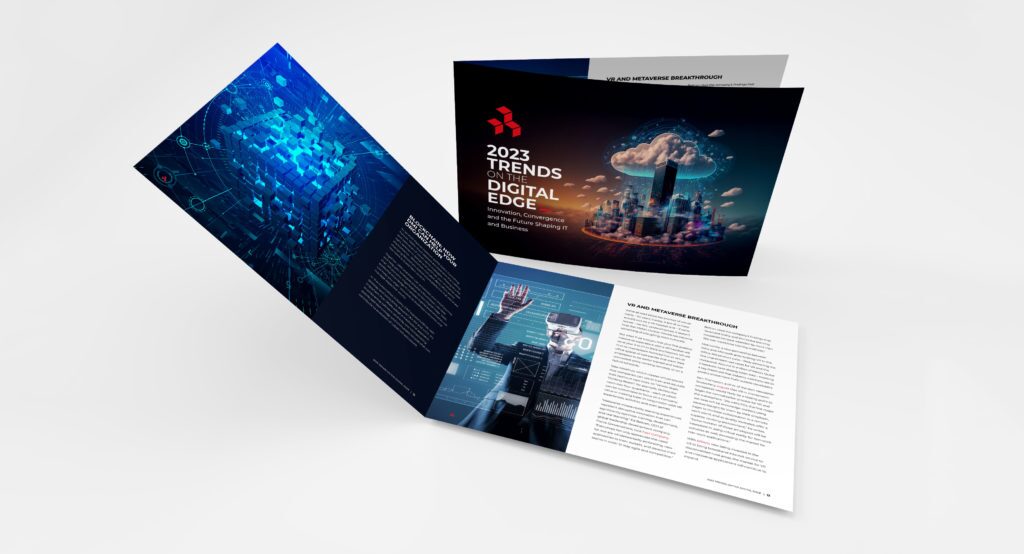For years, digital transformation has been the go-to term for private sector modernization efforts, leaving the public sector behind. But it is now time that government agencies and public sector organizations – large and small – refocus on the concept of technological and industry convergence and its ability to unlock new opportunities for innovation. Many government agencies have a vast, ever-growing storehouse of constituent data that can be leveraged with technologies that are maturing and converging to improve public services.

Here are four key questions that government agencies and government partners should consider to find real success in a commercial-driven digital landscape:
What is convergence exactly?
Convergence refers to combining previously separate new technologies, processes, industries, and/or information to create new products, services, and experiences. In the past, digital technology has been a widely used target for convergence. However, in the future, it is expected that technology will serve as a catalyst to enhance cross-industry convergence that taps into relationships and partnerships across the value chain, including government services.
How does technological convergence relate to innovation?
Technological convergence happens when separate digital technologies mature to the point that they can be integrated with other technologies. Innovation gave birth to those separate technologies, but human ingenuity is what brought them to maturity – and what continues to mature them after they can be widely integrated with government systems. Governments do not need pure innovation, per se, but rather innovation that has matured and been proven to work – and that can be made incrementally better over time through ideation.
What does digital maturity look like in the public sector?
 Digital maturity in the public sector refers to the extent to which government and public sector organizations effectively leverage digital technologies and processes to deliver public services, engage with citizens, and optimize their internal operations. Here are some characteristics that indicate digital maturity in the public sector:
Digital maturity in the public sector refers to the extent to which government and public sector organizations effectively leverage digital technologies and processes to deliver public services, engage with citizens, and optimize their internal operations. Here are some characteristics that indicate digital maturity in the public sector:
Digital Strategy
A digitally mature government technology has a well-defined digital strategy aligned with its overall goals and objectives. This strategy outlines how such technologies will be used to enhance service delivery, improve efficiency, and foster citizen engagement.
Citizen-Centric Services
Digital maturity involves providing convenient and accessible public services through various digital channels. This includes online portals, mobile applications, and other digital platforms enabling citizens to access information, complete transactions, and even interact with government leaders or employees.
Data-Driven Decision Making
A digitally mature public sector organization recognizes the value of data and uses it to create automated decision-making systems. This includes collecting, analyzing, and interpreting data and allowing machine learning to work and gain insights into citizen needs, program effectiveness, and operational efficiency.
Cross-Agency Collaboration
Digital maturity is characterized by collaboration and information-sharing among different government agencies, public sector leaders and their chief digital officers. This involves the integration of systems and data, enabling seamless interactions and coordinated service delivery across public sector workers in different departments.
Agile and Innovative Culture
A digitally mature public sector fosters an environment that encourages experimentation, innovation, and continuous improvement of the public sector’s technical skills. This includes embracing emerging technologies such as artificial intelligence, promoting digital literacy among government workers, and supporting a culture of adaptability and learning.
Cybersecurity and Privacy
A digitally mature public sector organization prioritizes cybersecurity and privacy to protect sensitive data and ensure the trust of citizens. Robust security measures, data protection policies, and compliance with relevant regulations are integral components of digital maturity in public sector organizations.
Digital Skills and Capacity
Developing digital skills and organizational capabilities among government employees is essential for digital maturity. This includes providing training programs, hiring digital talent, and fostering a culture of digital literacy to ensure that the workforce can effectively utilize digital tools and technologies for public sector organizations.
Open Data and Transparency
A digitally mature public sector organization promotes transparency by making data and information readily available to the public. This involves publishing open public sector data sets, facilitating data sharing, and engaging citizens in decision-making processes.
Continuous Improvement and Evaluation
Digital maturity is an ongoing journey. A mature public sector organization regularly evaluates its digital initiatives, measures performance, and seeks feedback from citizens and stakeholders. This feedback loop helps identify areas for improvement and guides future digital investments.
How can governments best make use of their technological investments today?
 Digital transformation was once the most important investment, but now it’s convergence. The public sector is being inundated with data from everywhere – constituent records, sensors within infrastructure, vehicles on roads. It’s no longer enough to have a place to store and secure such data. At the same time, the public sector needs to be able to leverage the data with technologies and platforms that did not even exist five years ago in order to improve governance, decision-making, policy and constituent outcomes.
Digital transformation was once the most important investment, but now it’s convergence. The public sector is being inundated with data from everywhere – constituent records, sensors within infrastructure, vehicles on roads. It’s no longer enough to have a place to store and secure such data. At the same time, the public sector needs to be able to leverage the data with technologies and platforms that did not even exist five years ago in order to improve governance, decision-making, policy and constituent outcomes.
It is important to note that achieving digital maturity in the public sector is a complex and multi-faceted process. It requires a trusted digital transformation partner like DMI to enable effective technology adoption and deliver improved outcomes for citizens. Contact us today for your digital transformation agenda for public sector organizations.



